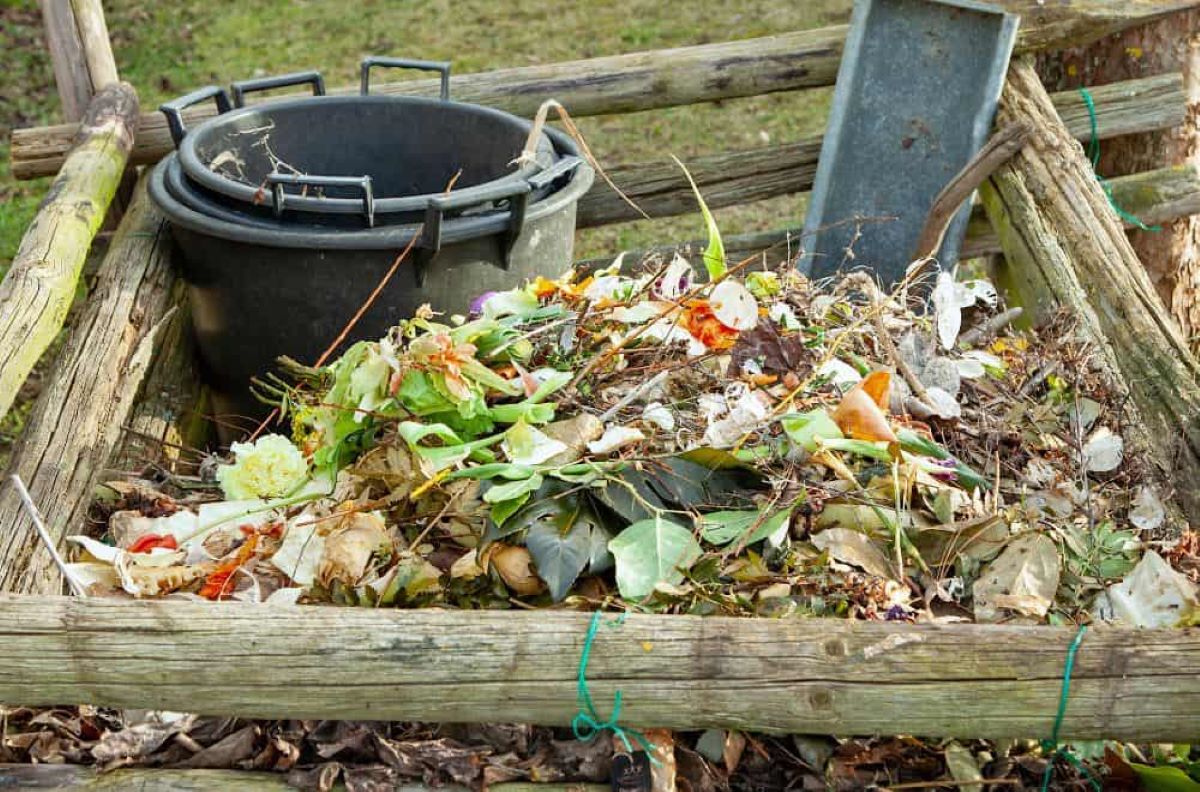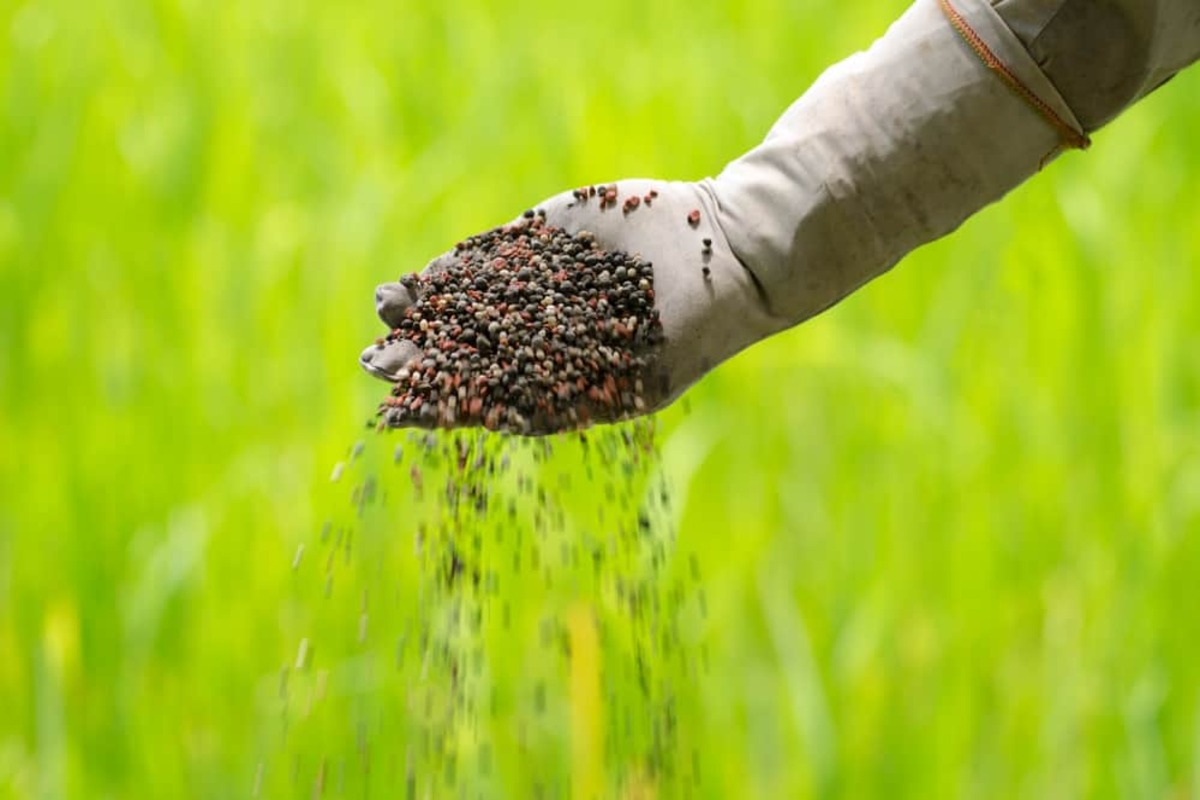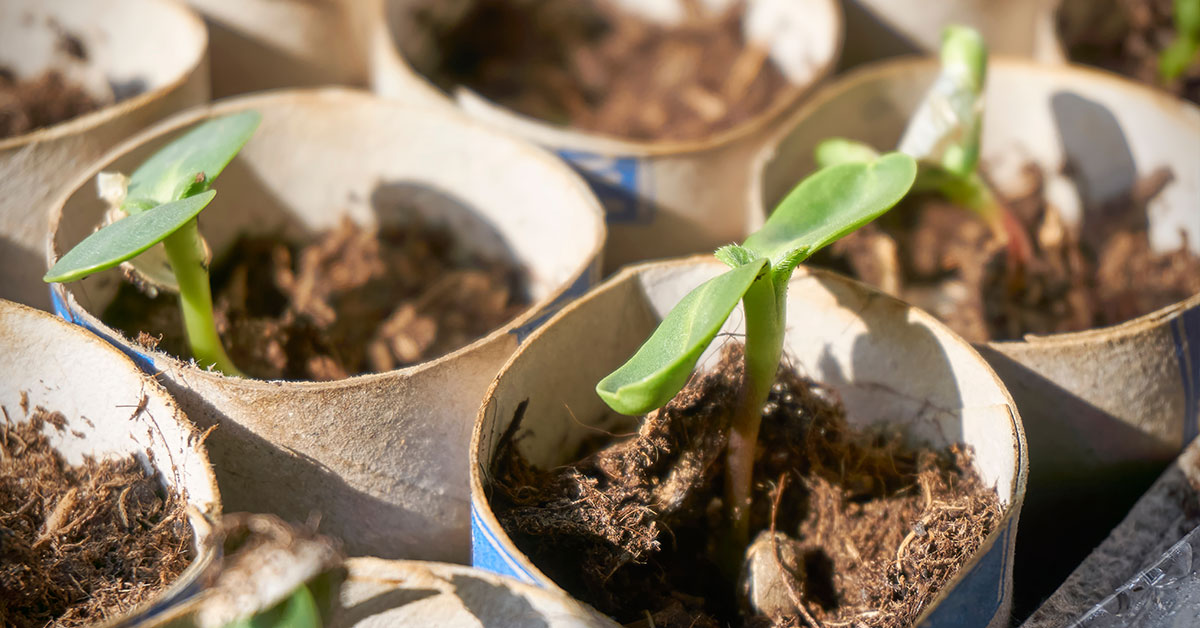Home>Gardening Basics>Getting Started>How Long Does It Take For Weeds To Die After Spraying


Getting Started
How Long Does It Take For Weeds To Die After Spraying
Modified: January 22, 2024
Learn how long it takes for weeds to die after spraying. Get started with effective methods to control and eliminate weeds in your garden.
(Many of the links in this article redirect to a specific reviewed product. Your purchase of these products through affiliate links helps to generate commission for Chicagolandgardening.com, at no extra cost. Learn more)
Table of Contents
Introduction
Welcome to our comprehensive guide on how long it takes for weeds to die after spraying. If you’re tired of dealing with pesky weeds in your garden or lawn, understanding the timeline for weed death can help you plan your weed control efforts more effectively.
Weeds are unwanted plants that compete with desirable plants for resources, such as sunlight, water, and nutrients. They can quickly take over and harm the health and appearance of your garden or lawn if left unchecked. Fortunately, herbicides offer an effective solution to eliminate weeds and restore the beauty of your outdoor space.
However, the speed at which weeds die after spraying can vary depending on several factors. The type of weed, the herbicide used, environmental conditions, and the overall health and resilience of the weeds all play a role in determining the timeframe for weed death.
In this guide, we will explore the different factors that influence weed response to herbicides and discuss the common herbicides available for weed control. We will also delve into the specific timeframes for weed death after spraying, as well as the environmental considerations that can affect the effectiveness of the herbicides. By the end, you will have a better understanding of how long it takes for weeds to die after spraying, allowing you to plan your weed management strategy more effectively.
So, without further ado, let’s dive into the fascinating world of weed control and uncover the secrets behind successfully getting rid of those stubborn garden invaders.
Factors Affecting Weed Response to Herbicides
When it comes to weed control, understanding the factors that influence weed response to herbicides is crucial. These factors can determine how effective a herbicide will be in killing the weeds and how quickly they will die. Let’s take a closer look at some of the key factors:
- Weed species: Different types of weeds respond differently to herbicides. Some weeds may be more resistant or tolerant to certain herbicides, making it more challenging to eradicate them. Understanding the specific characteristics of the weeds you are targeting can help you select the most appropriate herbicide.
- Herbicide type: There are various types of herbicides available, including pre-emergent and post-emergent herbicides. Pre-emergent herbicides are applied before the weeds germinate, while post-emergent herbicides are applied after the weeds have emerged. Each type has its own mode of action and effectiveness against specific weed species.
- Application timing: The timing of herbicide application is crucial for optimal weed control. Applying herbicides when weeds are actively growing and at their most vulnerable stage can significantly improve their response to treatment. Timing can vary depending on the weed species and the specific herbicide being used.
- Environmental conditions: Environmental factors such as temperature, humidity, and sunlight can impact the efficacy of herbicides. Some herbicides may require specific temperature ranges or environmental conditions to work effectively. It’s important to read and follow the instructions on the herbicide label to ensure optimal performance.
- Weed size and vigor: The size and vigor of the weeds can also affect their response to herbicides. Smaller weeds with less developed root systems are generally more susceptible to herbicide treatment. Weeds that are already stressed or weakened may also respond more quickly to herbicides.
By considering these factors, you can make informed decisions about herbicide selection and application timing, maximizing the effectiveness of your weed control efforts. Keep in mind that herbicides are powerful tools, and it’s essential to follow the manufacturer’s instructions and guidelines to ensure safe and effective use.
Common Herbicides Used for Weed Control
When it comes to weed control, there are a variety of herbicides available on the market. Understanding the different types of herbicides and their modes of action can help you select the most appropriate option for your specific weed problems. Let’s explore some common herbicides used for weed control:
- Glyphosate: Glyphosate is one of the most widely used herbicides for weed control. It is a non-selective herbicide, meaning it kills both broadleaf weeds and grasses. Glyphosate works by inhibiting an enzyme essential for plant growth. It is typically used in post-emergent applications and can be effective against a wide range of weeds.
- 2,4-D: 2,4-D is a selective herbicide commonly used to control broadleaf weeds. It primarily targets broadleaf plants while leaving grasses unharmed. This makes it an ideal choice for weed control in lawns and turf areas. 2,4-D disrupts the growth process in broadleaf plants, eventually leading to their death.
- Dicamba: Dicamba is another selective herbicide used for broadleaf weed control. It is often combined with other herbicides to create a broader spectrum of control. Dicamba works by causing uncontrolled growth in susceptible plants, ultimately leading to their demise. This herbicide is commonly used in agricultural and non-crop settings.
- Atrazine: Atrazine is a selective herbicide primarily used for controlling grassy weeds in agricultural settings. It is effective against a wide range of grasses and can be used on crops such as corn, sorghum, and sugarcane. Atrazine inhibits photosynthesis in susceptible plants, leading to their death over time.
- Triclopyr: Triclopyr is a selective herbicide commonly used to control woody plants, such as brush and small trees, along with broadleaf weeds. It can be especially effective in controlling invasive plants. Triclopyr disrupts the growth process in susceptible plants, eventually causing them to wither and die.
These are just a few examples of common herbicides used for weed control. It’s important to carefully read and follow the label instructions for any herbicide you use, as the application rates and timing may vary depending on the specific product and target weeds.
Furthermore, it’s worth noting that some herbicides may have restrictions or regulations regarding their use in certain areas or for specific purposes. Always check with local authorities or consult a professional if you have any concerns or questions about herbicide use.
Broadleaf Weeds
Broadleaf weeds are a common nuisance in gardens, lawns, and agricultural fields. They are characterized by their broad, flat leaves and typically have a different growth habit than grassy weeds. Understanding how to identify and control broadleaf weeds is essential for maintaining a healthy and weed-free outdoor space.
Some common types of broadleaf weeds include dandelion, clover, plantain, chickweed, and thistle. These weeds can quickly spread and compete with desirable plants for resources, stifling their growth and compromising the overall appearance of the area.
When it comes to controlling broadleaf weeds, herbicides that specifically target these weeds can be effective. Selective herbicides, such as those containing 2,4-D or dicamba, are commonly used for broadleaf weed control. They are designed to kill broadleaf weeds while leaving grasses unharmed. These herbicides work by disrupting the growth process in broadleaf plants, leading to their eventual demise.
In addition to herbicide treatment, there are other methods you can employ to control broadleaf weeds. These include:
- Hand pulling: For a few scattered broadleaf weeds, hand pulling can be an effective and environmentally friendly method of control. Be sure to remove the entire weed, including the roots, to prevent regrowth.
- Mulching: Applying a layer of organic mulch around plants and in garden beds can help suppress weed growth, including broadleaf weeds. Mulch deprives weeds of sunlight and also helps retain soil moisture.
- Cultural practices: Maintaining a healthy lawn or garden through proper watering, mowing, and fertilizing can create conditions that promote the growth of desirable plants and discourage the growth of weeds.
- Integrated weed management: A comprehensive approach to weed control involves integrating several methods, such as herbicide treatment, hand weeding, and cultural practices. This approach can help prevent weed resistance and provide more effective and long-lasting control.
Remember, prevention is always better than cure when it comes to broadleaf weed control. Regularly inspect your garden or lawn for early signs of infestation, and take proactive measures to control weeds before they become a widespread issue.
Grass Weeds
Grass weeds are another common problem in gardens, lawns, and agricultural fields. Unlike broadleaf weeds, grass weeds are characterized by their narrow, blade-like leaves and their tendency to spread rapidly through underground rhizomes or above-ground runners. It’s important to understand how to identify and control grass weeds to maintain the health and appearance of your outdoor space.
Some common types of grass weeds include crabgrass, Bermuda grass, quackgrass, and annual bluegrass. These weeds can quickly invade lawns, garden beds, and crop fields, competing with desirable plants for resources and detracting from the overall aesthetic appeal.
Controlling grass weeds requires a different approach than controlling broadleaf weeds. The use of selective herbicides that target grassy weeds while sparing broadleaf plants is the most common method of control. Pre-emergent herbicides, applied before the grass weeds germinate, can be effective in preventing their establishment. Post-emergent herbicides are used when the grassy weeds are actively growing.
It’s important to select a herbicide that specifically targets the type of grass weed you are dealing with, as different grass weeds may have varying susceptibilities to herbicides. Reading and following the label instructions is crucial to ensure effective and safe use of the herbicide.
In addition to herbicide treatment, there are other strategies you can employ to control grass weeds:
- Regular mowing: Proper and regular mowing at the recommended height can help weaken grass weeds and prevent them from producing seed heads.
- Overseeding: Overseeding involves planting desirable grass species in thin or patchy areas of the lawn. A dense and healthy lawn can help suppress the growth of grass weeds.
- Hand weeding: For a few isolated grass weeds, hand weeding can be effective, especially if the weed is young and hasn’t established a strong root system.
- Improved lawn care practices: Maintaining a healthy lawn through proper watering, fertilizing, and aerating can help create conditions that discourage the growth of grass weeds and promote the growth of desirable grass species.
Remember, consistent and integrated weed management practices are key to effectively controlling grass weeds. A combination of herbicide treatment, cultural practices, and regular maintenance will help you achieve a lush, weed-free lawn or garden.
Weed Control Timeframes after Spraying
After applying herbicides to control weeds, it’s natural to wonder how long it will take for the weeds to die. The timeframe for weed control after spraying can vary depending on several factors, including the type of weed, the herbicide used, and environmental conditions. Let’s explore the general timeframes for weed death after spraying:
Fast-acting herbicides: Some herbicides have a quick action and can cause visible damage to weeds within hours or days. These fast-acting herbicides are often contact herbicides that directly damage the leaves and stems of the weeds upon contact. However, it’s important to note that even with fast-acting herbicides, complete weed death may take a few weeks as the herbicide moves throughout the plant.
Slow-acting herbicides: Other herbicides work more slowly, taking several weeks to effectively kill weeds. These herbicides are often systemic, meaning they are absorbed by the foliage and transported throughout the plant, including the roots. While the initial signs of damage may not be immediate, the herbicide gradually works to inhibit the plant’s growth and eventually leads to weed death.
Persistent herbicides: Certain herbicides, especially those used for long-term weed control in areas such as pathways or driveways, can have a more extended effect. These herbicides form a barrier in the soil or create a long-lasting residue on surfaces, preventing weed growth over a prolonged period of time. The timeframes for weed control with persistent herbicides can range from several months to years.
It’s important to note that while the herbicides play a crucial role in weed control, they are not an instant solution. Weeds that have already produced seeds may still have viable seeds in the soil that can germinate and grow, requiring additional treatments to prevent their establishment.
Furthermore, the effectiveness of herbicides can be influenced by environmental factors such as temperature, humidity, and sunlight. Herbicides typically work best when applied during optimal weather conditions, as specified on the product label.
In summary, the timeframe for weed control after spraying can vary depending on the herbicide used, the type of weed, and environmental conditions. While some herbicides may cause visible damage within hours or days, complete weed death may take several weeks. It’s important to read and follow the label instructions of the herbicide, as it will provide specific guidance on the expected timeframes for weed control.
Factors Influencing Speed of Weed Death
The speed at which weeds die after spraying can vary based on several factors. Understanding these factors can help you better gauge the effectiveness and timeline of weed control. Here are some key factors that influence the speed of weed death after spraying:
Weed species: Different weed species have varying susceptibilities to herbicides. Some weeds may be more resistant or tolerant, requiring higher concentrations or multiple applications for effective control. Weeds with a faster growth rate may also show a quicker response to herbicides compared to slower-growing weeds.
Herbicide type and concentration: The type of herbicide used can have a significant impact on the speed of weed death. Some herbicides work by disabling specific plant processes, while others block the production of essential proteins or hormones. Additionally, the concentration of the herbicide can affect its effectiveness. Follow the label instructions to ensure proper application and dosage.
Application timing: Applying herbicides at the right stage of weed growth is crucial for optimal control. Weeds that are actively growing and at susceptible stages, such as when they have developed leaves or are in the early reproductive phase, are more likely to respond quickly to herbicides. Timing can vary depending on the specific weed species and the herbicide being used.
Environmental conditions: Environmental factors can influence the speed at which herbicides work. Temperature, humidity, and sunlight can affect the absorption and translocation of herbicides within the plant. Herbicides may work more efficiently in favorable conditions, such as moderate temperatures and adequate soil moisture. Conversely, extreme temperatures, rainfall immediately after application, or prolonged dry spells can impact herbicide efficacy.
Weed density: The density of weeds in an area can also impact the speed of weed death. If the area is heavily infested, the herbicide may need more time to reach and act on all the weeds. In contrast, when weeds are sparse, the herbicide may have a quicker impact due to less competition for resources and greater herbicide coverage on individual plants.
Overall weed health: The health and vigor of the weeds themselves can affect their response to herbicides. Weeds that are already stressed, compromised by disease or insect damage, or in poor overall health may not respond as quickly or effectively to herbicide treatment.
It’s essential to consider these factors when planning and executing your weed control strategy. Choosing the right herbicide, applying it at the appropriate stage of weed growth, and considering the environmental conditions can all contribute to a faster and more effective weed control outcome.
Environmental Considerations
When it comes to weed control, considering the environmental impact of your actions is essential. While herbicides can be effective in managing weeds, it’s important to be mindful of their potential effects on the environment and take necessary precautions. Here are some key environmental considerations to keep in mind:
Surface and groundwater contamination: Herbicides can be carried through runoff and infiltration into surface water bodies or groundwater sources. This can potentially impact aquatic ecosystems and water quality. To minimize contamination risks, avoid applying herbicides near bodies of water and follow label instructions regarding setback distances and applications near sensitive areas.
Non-target plant damage: Herbicides are designed to target specific weeds, but they can potentially harm non-target plants as well. Take care when applying herbicides near desirable plants or in areas with diverse vegetation. Use shields or spot treatments to minimize herbicide drift, and consider alternative weed control methods such as hand weeding in sensitive areas.
Wildlife and beneficial organisms: Herbicides can have unintended effects on wildlife and beneficial organisms. Some herbicides may be toxic to insects, birds, or other wildlife species. Be mindful of the potential impacts on pollinators and other beneficial organisms when selecting and using herbicides. Minimizing herbicide use in areas with high ecological value can help protect these important organisms.
Soil health: Herbicides can affect soil health, including the microbiological activity and nutrient availability. Some herbicides may persist in the soil, impacting subsequent plant growth. It’s important to understand the potential long-term effects of herbicides on soil health and consider alternative weed management practices, such as mulching and cultivation, in situations where soil health is a priority.
Air quality: Herbicides, particularly those in spray form, can release volatile organic compounds (VOCs) into the air. These VOCs can contribute to air pollution and affect human health. To reduce VOC emissions, use herbicides with low volatility and apply them during calm weather conditions to minimize drift.
Follow label instructions: One of the most critical environmental considerations is to always follow the label instructions of the herbicide. The label provides guidance on proper application rates, timing, and precautions to protect the environment and ensure effective and safe use. It’s essential to read and understand the label before using any herbicide.
By considering these environmental factors and adopting responsible weed control practices, you can effectively manage weeds while minimizing potential harm to the environment. Integrated weed management, which combines various methods including cultural, mechanical, and chemical control, can provide a more sustainable approach to weed management while protecting our precious ecosystems.
Effectiveness of Different Herbicides
When it comes to weed control, the effectiveness of herbicides can vary depending on several factors. Choosing the right herbicide for your specific weed problem is crucial to achieving successful weed control. Here, we will explore the effectiveness of different types of herbicides:
Selective herbicides: Selective herbicides are designed to target specific types of weeds while leaving desirable plants unharmed. These herbicides are commonly used in lawns and garden beds to control weeds without damaging the surrounding vegetation. The effectiveness of selective herbicides relies on properly identifying the target weed and selecting the appropriate herbicide for that specific weed species.
Non-selective herbicides: Non-selective herbicides, such as glyphosate, are designed to kill any plant they come into contact with. These herbicides are useful when dealing with a wide range of weeds or when total vegetation control is needed. However, caution should be exercised when using non-selective herbicides to avoid damage to desirable plants.
Pre-emergent herbicides: Pre-emergent herbicides are applied before weed seeds germinate, creating a barrier in the soil that prevents weed growth. These herbicides are effective in preventing weed emergence, but they have limited or no effect on existing weeds. Timing is crucial when applying pre-emergent herbicides, as they must be applied before weed seeds begin to germinate.
Post-emergent herbicides: Post-emergent herbicides are applied after weeds have emerged. They work by directly targeting and killing actively growing weeds. Post-emergent herbicides can be selective or non-selective, depending on the intended purpose. Selective post-emergent herbicides can be used to control specific types of weeds in crops, lawns, or ornamental plants.
Contact herbicides: Contact herbicides, as the name suggests, work by directly contacting and damaging the foliage of the weeds. They are fast-acting and can cause visible damage to the treated weeds within hours or days. However, contact herbicides may not effectively control weeds with extensive root systems, as they do not translocate throughout the plant.
Systemic herbicides: Systemic herbicides are absorbed by the foliage and transported throughout the plant, including the roots. These herbicides offer long-lasting control as they kill the entire weed, including the underground parts. Systemic herbicides are effective for controlling perennial weeds or weeds with extensive root systems.
Persistent herbicides: Persistent herbicides create a long-lasting barrier or residue that prevents weed growth in treated areas. They can provide control for an extended period, reducing the need for frequent reapplication. However, caution should be exercised when using persistent herbicides near desirable plants or in areas where vegetation may be reintroduced in the future.
It’s important to read and follow the label instructions of any herbicide you use to ensure proper application and maximize its effectiveness. Additionally, it’s worth noting that factors such as weed species, application timing, environmental conditions, and overall weed health can also influence the effectiveness of herbicides. Considering these factors alongside the appropriate herbicide selection will increase your chances of successful weed control.
Conclusion
Weed control is an essential aspect of maintaining the health and appearance of gardens, lawns, and agricultural fields. Understanding how long it takes for weeds to die after spraying and the factors influencing their response to herbicides is crucial for effective weed management.
We have explored various factors that affect weed response to herbicides, including the type of weed, herbicide selection, application timing, environmental conditions, and overall weed health. By considering these factors, you can make informed decisions about herbicide selection, application methods, and timing, maximizing the effectiveness of your weed control efforts.
We have also discussed common herbicides used for weed control, such as selective and non-selective herbicides, pre-emergent and post-emergent herbicides, and contact and systemic herbicides. Understanding the characteristics and applications of these herbicides will assist you in selecting the most appropriate option for your specific weed problems.
Furthermore, we have touched upon the timeframes for weed death after spraying, which largely depend on the type of herbicide used, the weed species, and environmental conditions. While some herbicides may cause visible damage to weeds within hours or days, complete weed death may take several weeks.
During your weed control efforts, it’s essential to consider environmental factors and practice responsible herbicide use. Assessing surface and groundwater contamination risks, considering non-target plant damage, safeguarding wildlife and beneficial organisms, preserving soil health, and maintaining air quality are all important environmental considerations to keep in mind.
In conclusion, effective weed control requires a systematic and informed approach. Selecting the appropriate herbicide, considering the specific factors influencing weed response, and taking environmental considerations into account will contribute to successful weed management. By staying knowledgeable and adopting integrated weed management practices, you can achieve a weed-free and thriving outdoor space.




